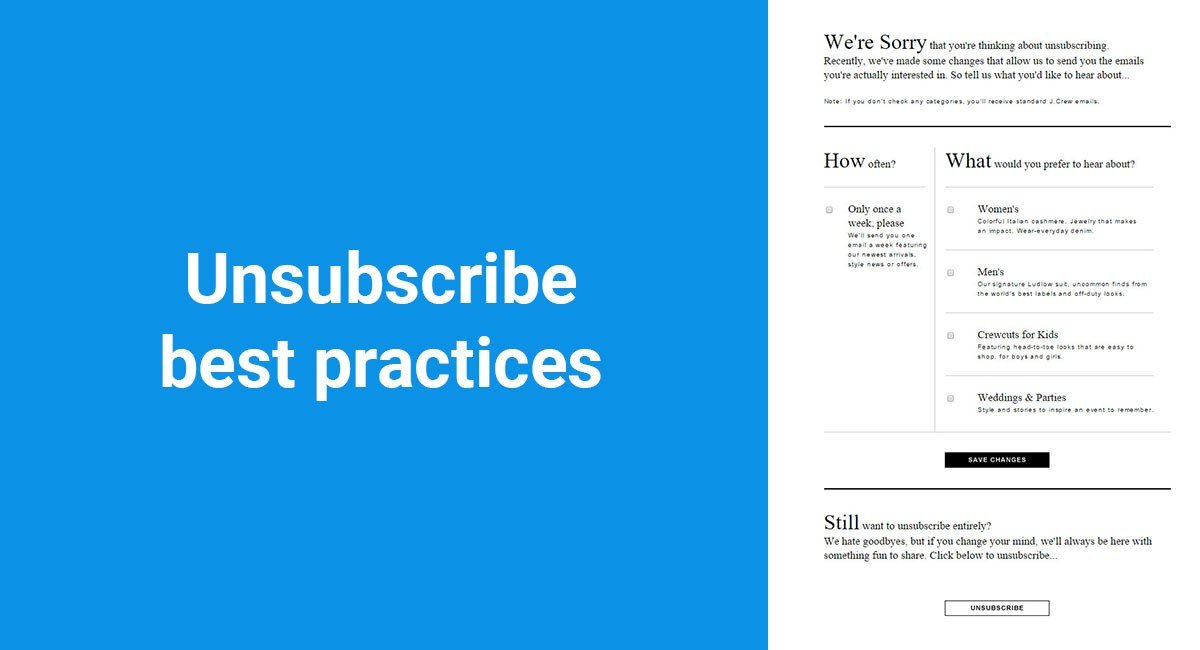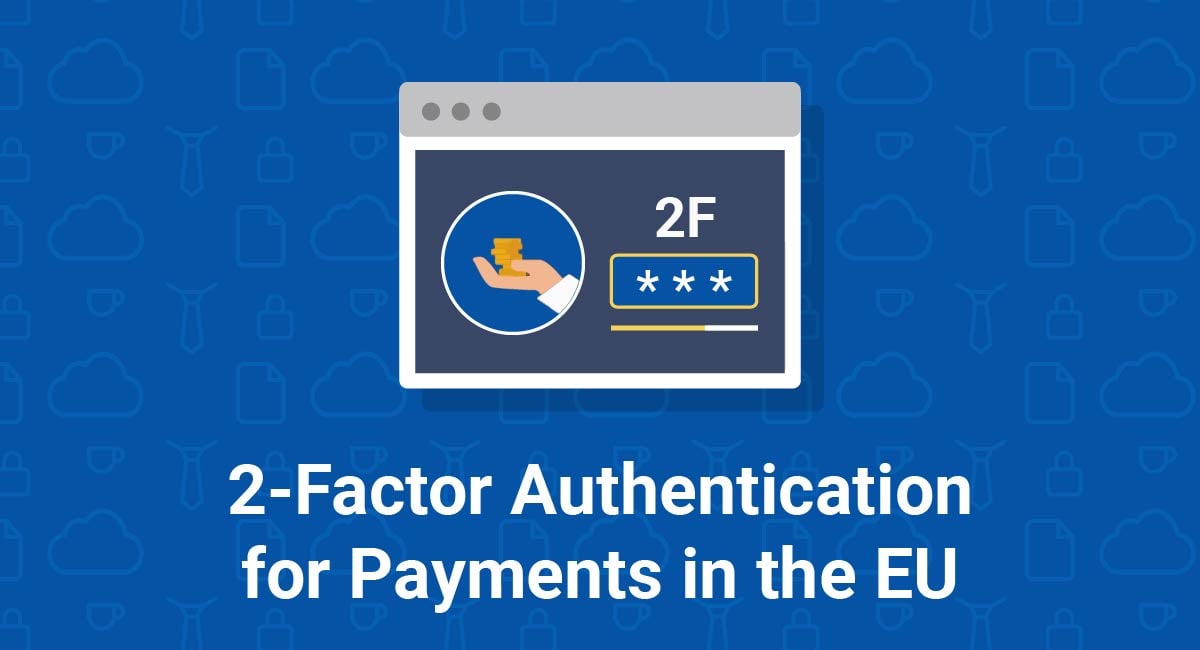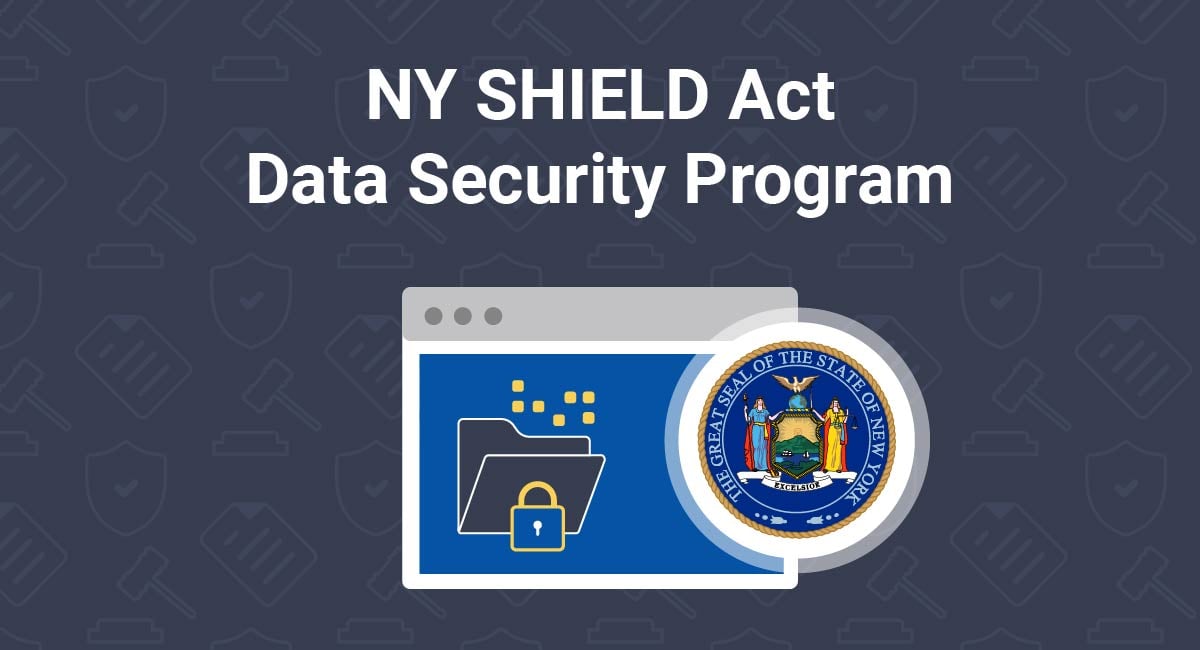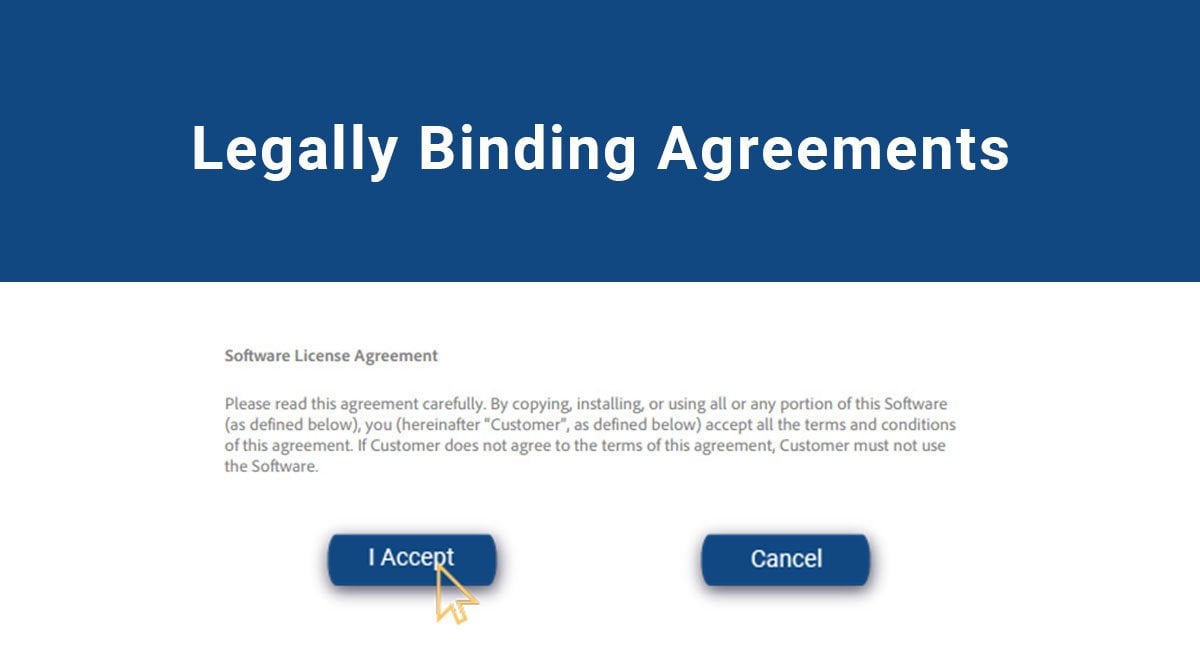If you own an email list and send emails to your customers, you probably send out commercial messages and need to comply with CAN-SPAM.
Amongst the handful of requirements of the CAN-SPAM law is the opt-out - or unsubscribe - requirement.
CAN-SPAM is an American law that aims to limit spam emails by setting forth requirements and standards for businesses or individuals who send commercial messages.
According to this US law, a message is considered to be commercial if its primary purpose is
"the commercial advertisement or promotion of a commercial product or service."
The opt-out/unsubscribe requirement makes it mandatory that you give users a way to stop receiving emails from you.
Every email communication you send out must include a clear, conspicuous, easy to read and understand explanation of how that user can fully opt out of receiving emails from you.
You can offer options to unsubscribe from different email lists (so it isn't an all or nothing situation), but you must include the full opt-out/unsubscribe option as well.
Here are a few of the best practices you should be employing to stay CAN-SPAM compliant.
What customers say about TermsFeed:
This really is the most incredible service that most website owners should consider using.
Easy to generate custom policies in minutes & having the peace of mind & protection these policies can offer is priceless. Will definitely recommend it to others. Thank you.
- Bluesky's review for TermsFeed. Read all our testimonials here.
With TermsFeed, you can generate:
- 1. Provide a single-click unsubscribe from all lists
- 2. Don't hide your unsubscribe link
- 3. Link your unsubscribe link
- 4. Unsubscribe users quickly
- 5. Provide a last-minute option for users to stay subscribed
- 6. Let users change their email address
- 7. Provide alternative ways to keep in touch other than email
- 8. Ask why
- 9. Be nice about it
- 10. Check in with current subscribers who haven't interacted in a while
Provide a single-click unsubscribe from all lists

Your users will appreciate a quick way to get unsubscribed, and you'll appreciate staying legally compliant.
Here's how Amazon does it. At the end of every single email communication, Amazon includes a link where a user can unsubscribe.

When a user clicks on the "Unsubscribe here" link from Amazon's email, he's taken to Amazon's unsubscribe page.
CAN-SPAM requires that this page include a way for a user to unsubscribe from all communications and Amazon makes it so easy for users to unsubscribe with just one "Unsubscribe from all" click:
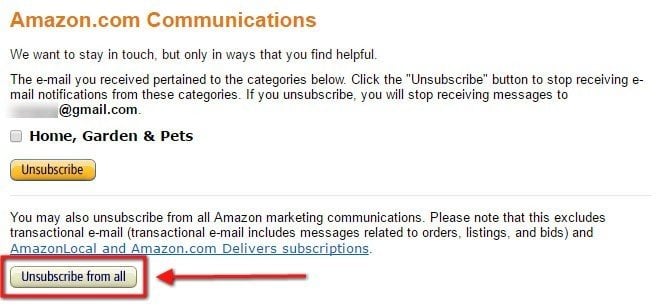
Don't hide your unsubscribe link

CAN-SPAM requires that your unsubscribe link be clear and conspicuous.
Also, not doing so can annoy your customers who are already possibly annoyed with your emails if they have to struggle to find your link or just can't find it at all.
If you don't allow for an obvious way to unsubscribe, you'll be violating CAN-SPAM.
Most unsubscribe links can be found in email footer sections, which means this is where most users look for them. This standard placement is a good best practice to follow:

Link your unsubscribe link

CAN-SPAM requires that any unsubscribe link included in your emails be working and active for 30 days from when you send it out.
Canada's anti-spam law, CASL, is much tougher and requires any links to work for 60 days.
It's better to provide users with a way to adjust their email subscription options versus just fully unsubscribing from your email list.
This can can be key to subscriber retention. Some customers may be happier with a weekly email versus a daily email, and you'll be happier with having a less intimate and interactive customer versus no customer.
There are two main subscription adjustment options that you should provide:
- Frequency of emails.Some people don't want to receive a lot of emails a day from you, or even one per day.Provide options for weekly emails as opposed to daily or many-per-day options.
- Topics of emails.Letting users tailor which topics they hear from you can be an important way to keep them subscribed to your email list.If your store sells men's and women's clothing, your men subscribers won't necessarily care about sales on women's clothing, and vice versa.
For example, you may have someone who only wants to receive weekly emails from you, and only with information about men's clothing, versus daily emails with information about all categories of your business or service.
![]()
J. Crew provides users who attempt to unsubscribe with options for both frequency and categories of emails. Users can choose to get weekly emails only, and only for topics they want, like men's, kid's, or even just weddings and parties.
Note how at the very bottom there's still an option to completely unsubscribe from J. Crew in case that's what your users definitely want to do, even after being presented with options:
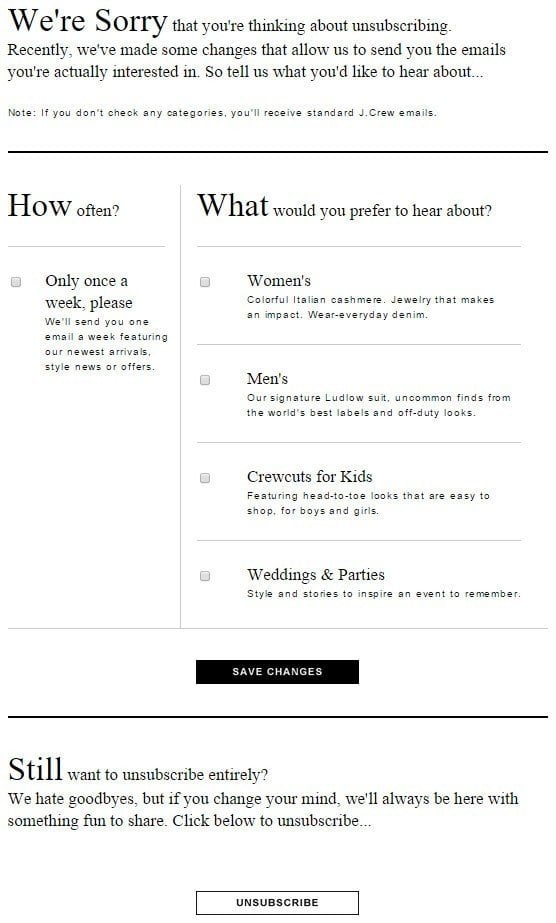
Amazon also includes options for users to adjust their subscriptions individually, as well as any communications from affiliates.
In the example below, the user has the option to unsubscribe from all emails, or just from the ones she's signed up to receive (Home, Garden & Pets):

Vimeo takes users who are looking to unsubscribe to a preferences menu where they can adjust and fine-tune their email subscriptions, opting to remain subscribed to some communications while dropping others.
There's also an option to unsubscribe from all promotional emails by checking one box:
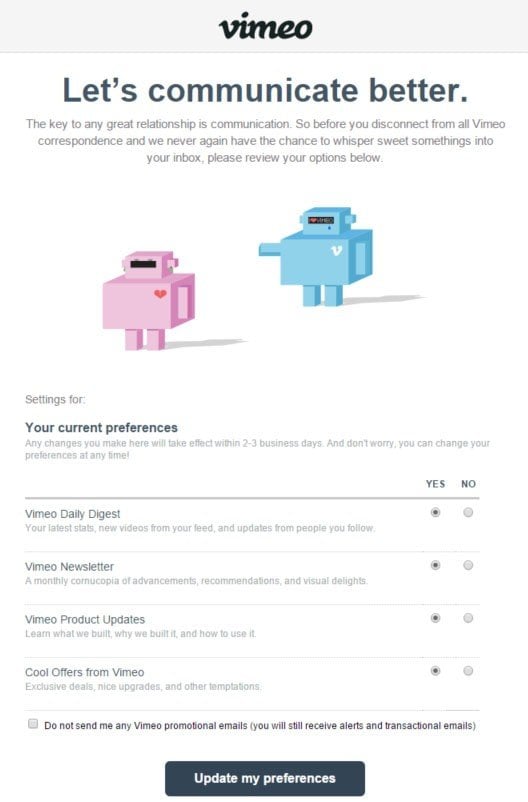
Bonobos may provide the best set of options for adjusting frequency of emails. This men's clothing store doesn't have options for limiting category subscriptions since it's all men's clothing and apparel, but there are plenty of options for how often you receive their emails. Users can pick from once a week, a few times a month, once a month.
There are also options for taking a 30 day break then returning to the normal subscription, or completely unsubscribing, all in one handy e-form:
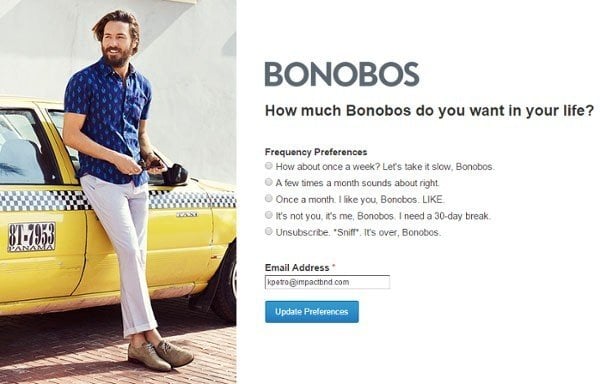
As long as you provide a complete unsubscribe option to your users, you can get creative and allow for subscription adjustments that your users may prefer over that all-or-nothing approach to being on your email list.
Unsubscribe users quickly

While CAN-SPAM gives you 10 days to honor any unsubscribe requests, you should aim to do this much more quickly than 10 days.
Try to make that email where the unsubscribe link was clicked the last email the person has to receive. Remember, they don't want to hear from you anymore, and definitely not for the next 10 days.
Provide a last-minute option for users to stay subscribed

Sometimes you can win back someone who's ready to unsubscribe just by providing them with a second to have a second thought.
Email Monks gives users that extra chance to change their mind and stay subscribed, and does it in a really cute way. A drawing of a sad monk with a broken heart and a personalized message with the user's first name will add an aspect of humanity to the emails that may make a user choose to stay subscribed after all.
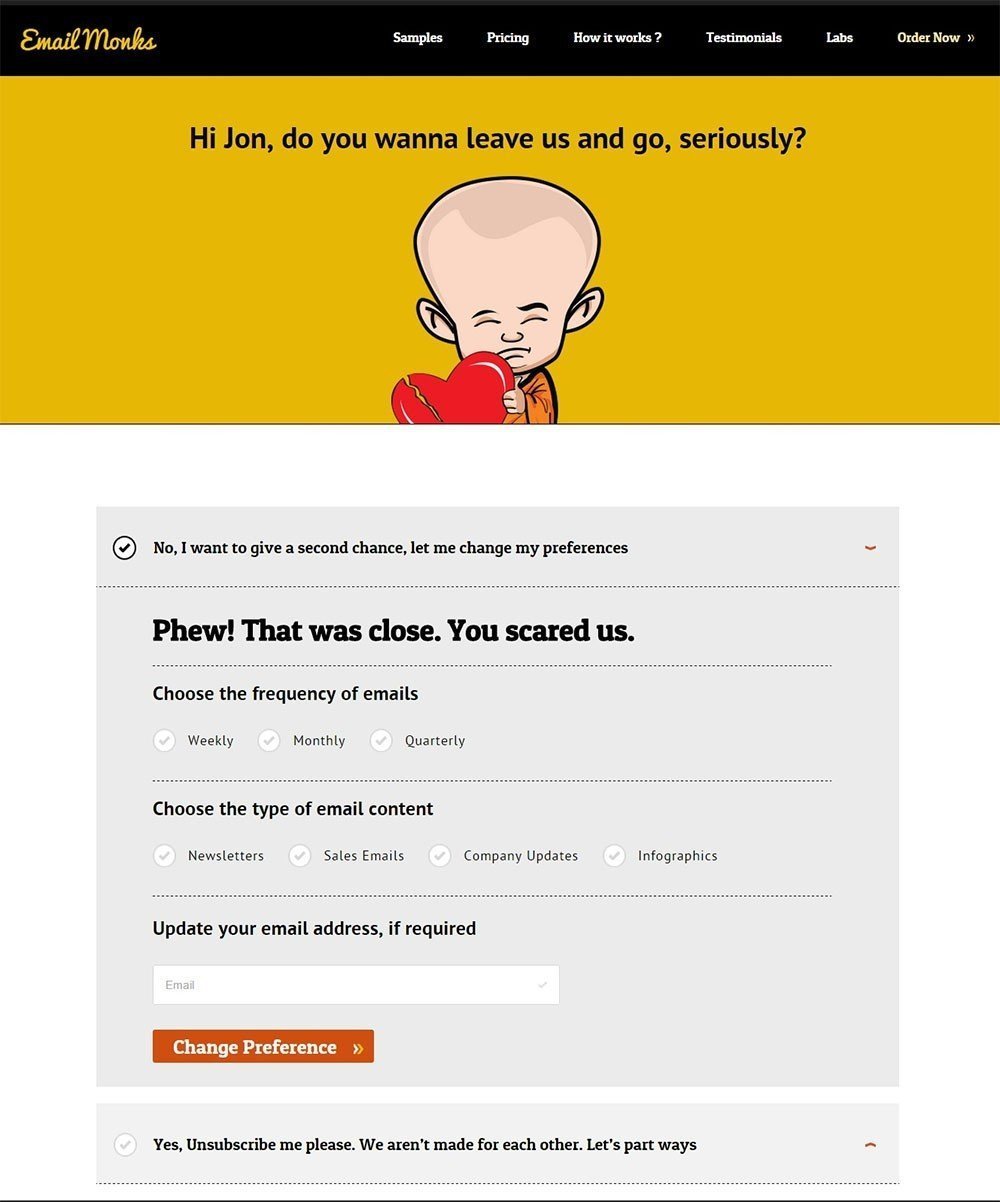
Giving a simple but personal and personable chance to reconsider unsubscribing might be enough to change a user's mind and get him to stay.
Let users change their email address

If someone can't easily figure out how to update their email address stored with you, they may resort to unsubscribing and might not re-subscribe with their new address unless they really, REALLY love you.
If you give an option to update an email address with a new one, you'll experience higher subscriber retention rates.
At the end of every single email they send out, REI includes a link to change your email address.

1800CONTACTS prompts users to enter their email addresses to unsubscribe but provides a space on the same screen where an email address can be updated just as quickly and easily via the same email field.
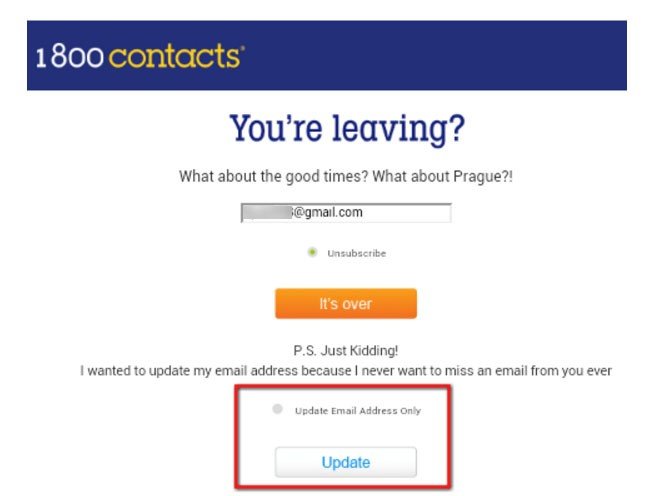
Provide alternative ways to keep in touch other than email

Even if you lose people from your email list, try to get them to stay in touch with you another way, like through your social media accounts.
Here's how Lucky Peach presents unsubscribed users with a chance to follow on multiple different social media platforms. On the bottom of the unsubscribe confirmation page, it says "Maybe social networking is more your speed. If so, follow us here:" and icons for different social media outlets are included.
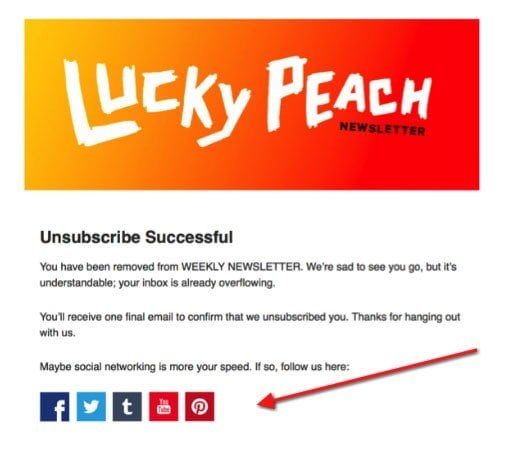
The more options you provide for how your users can connect with you, the more likely you are to stay connected, even with setting email aside.
Ask why

Putting an exit survey in your unsubscribe steps can help you find out why your users are unsubscribing so you can adjust your actions and retain more subscribers.
Just remember to keep this section short, simple, and definitely optional.
When a user wants to be done with your emails, they just want to be done and move on, and not be annoyed with surveys and questions.
Here's how Nordstrom tries to find out why a user has unsubscribed.
A short optional survey is included after unsubscription where users are asked why they're leaving. Some common reasons for unsubscribing are included, as well as space to write a custom answer if desired.
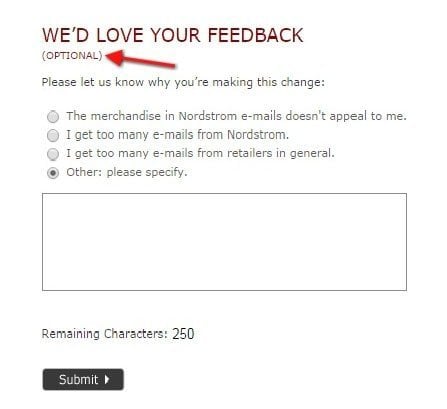
Another method is to just leave an open-ended comment box so each response will be fully customized:
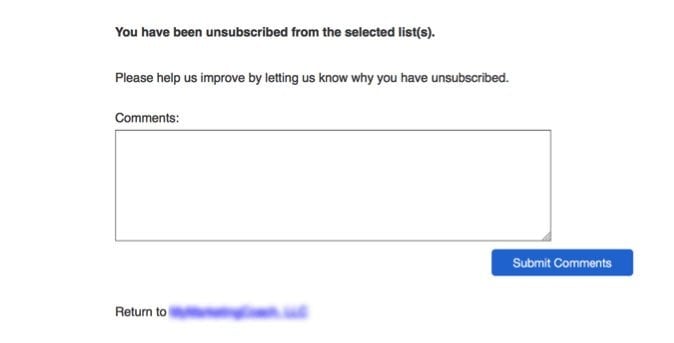
Be nice about it

Writing a short, heartfelt type of goodbye message can make all the difference when someone unsubscribes.
Remember, people have a tendency to be frustrated, annoyed or just over your emails when they're unsubscribing. Being kind can help them calm down, reconsider, and even choose to re-subscribe right away.
HubSpot tries to pull on heartstrings with its exit message of "We already miss how close we used to be" along with a video:
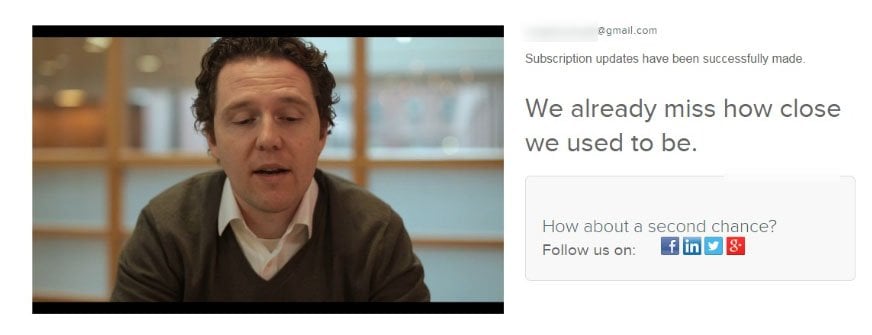
Groupon takes a similar approach by humorously telling unsubscribers that Groupon is sad to see them go.
They include a funny video of a guy named Derrick who "thought you'd enjoy that email you didn't like."
Just in case this wins back the hearts of the newly unsubscribed users, there's a handy link below the video that lets users quickly and easily "re-subscribe to Groupon emails."
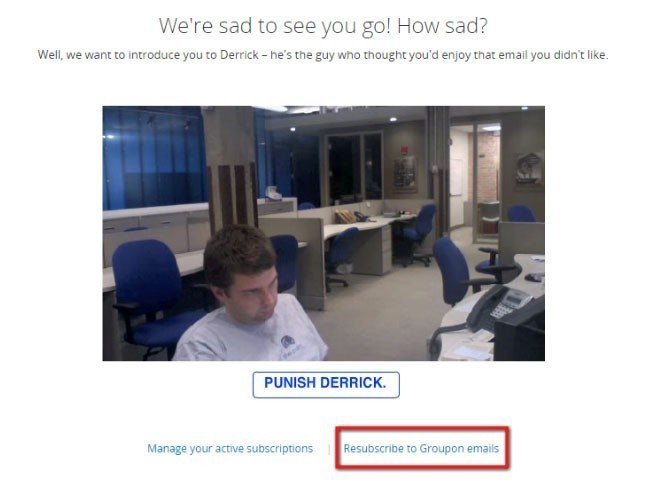
Check in with current subscribers who haven't interacted in a while

Doing so gives users an option right away to stay subscribed or unsubscribe.
Most users will appreciate you checking in so much that they'll be inclined to confirm their subscription and perhaps even start interacting more with your emails since they'll become aware that you're aware of this.
It's also a really nice gesture to make it so easy for someone who isn't into your emails anymore to unsubscribe.
Here's what Free People sends to subscribers who haven't been active lately:
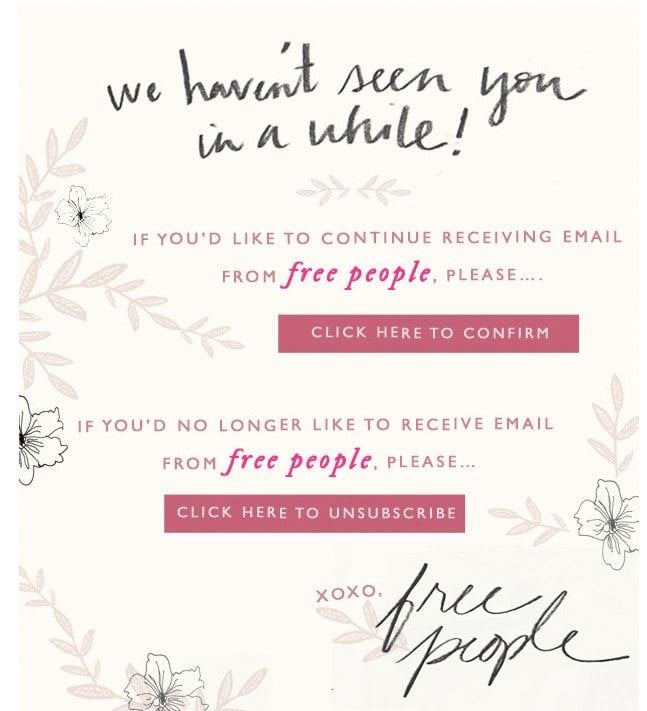
If you follow these best practices, you'll not only stay compliant with the unsubscribe requirement of CAN-SPAM and other anti-spam laws, but you'll also have fewer unsubscribes and happier customers.

Comprehensive compliance starts with a Privacy Policy.
Comply with the law with our agreements, policies, and consent banners. Everything is included.
